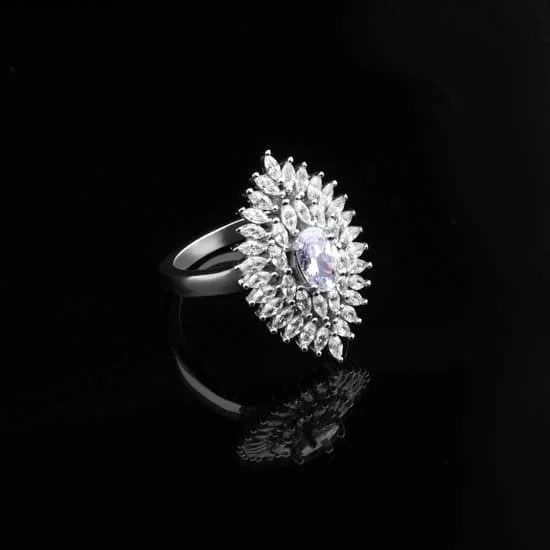Are you interested in learning how to make South African beaded jewelry? South African beaded jewelry is not only beautiful, but it also holds deep cultural significance. In this article, we will explore the history and cultural importance of South African beaded jewelry, the materials and tools needed for creating your own designs, as well as step-by-step guides and advanced techniques to help you craft stunning pieces.
South African beaded jewelry has a rich history and plays a significant role in traditional ceremonies and rituals. The intricate beadwork reflects the unique heritage of various South African tribes, making each piece a work of art with its own story to tell. Whether you are a beginner or an experienced crafter, this article will provide you with the necessary knowledge and inspiration to create your own beautiful South African beaded jewelry.
From learning about traditional bead colors and patterns to incorporating unique elements like shells and charms into your designs, there are endless possibilities when it comes to creating South African beaded jewelry. Additionally, we will also delve into marketing and selling your handmade pieces, offering tips on how to showcase and promote your creations.
So, if you are ready to embark on an exciting journey of creativity and cultural exploration, read on for everything you need to know about making South African beaded jewelry.
History and Cultural Significance of South African Beaded Jewelry
The history and cultural significance of South African beaded jewelry is deeply rooted in the country’s rich and diverse heritage. For centuries, beads have played a significant role in the adornment and cultural expression of various South African tribes and ethnic groups. Beadwork is not only a form of artistic expression, but it also holds great symbolic importance within these communities.
One of the most iconic uses of beaded jewelry in South Africa is as a form of communication. Different colors, patterns, and designs hold specific meanings that convey messages about the wearer’s age, marital status, social standing, and even their tribe or clan. It serves as a way to express identity, belonging, and personal narrative within the larger community.
In addition to its cultural significance, the history of South African beaded jewelry also reflects the influence of trade and colonization on indigenous art forms. The introduction of glass beads by European settlers significantly impacted traditional beadwork techniques and designs. As a result, South African beaded jewelry has evolved over time to incorporate both traditional materials such as natural seeds and animal bones, as well as modern elements like glass beads and metal charms.
| South African Beaded Jewelry | History and Cultural Significance |
|---|---|
| Beadwork as a form of communication | Various colors, patterns, and designs hold specific meanings to convey messages about the wearer |
| Influence of trade and colonization | The introduction of glass beads by European settlers impacted traditional beadwork techniques and designs |
Materials and Tools Needed for Making South African Beaded Jewelry
South African Beaded Jewelry is known for its vibrant colors, intricate patterns, and cultural significance. To create your own South African Beaded Jewelry, you will need a few essential materials and tools to get started.
Beads
The most important material for making South African Beaded Jewelry is, of course, beads. Traditional South African beaded jewelry often features bright and bold colors, so consider using a variety of glass or seed beads in colors such as red, yellow, green, and blue. You can also incorporate traditional Ndebele patterns into your designs with the use of geometrically shaped beads.
Thread or Wire
To string your beads together, you will need a durable and flexible material such as nylon thread or beading wire. This will ensure that your jewelry is strong and long-lasting. Choose a color that complements your bead choices to enhance the overall look of the finished piece.
Needles and Scissors
You will need thin beading needles to easily thread your beads onto the string or wire. Additionally, a good pair of sharp scissors will come in handy for cutting the thread or wire to the desired length.
Clasps and Findings
To complete your South African Beaded Jewelry pieces, you will need clasps and findings such as jump rings and crimps. These items are essential for securing the ends of your jewelry and allowing them to be worn comfortably.
Now that you have gathered all the necessary materials and tools for making South African Beaded Jewelry, let’s move on to the next step – creating a basic beaded jewelry design using these supplies.
Step-by-Step Guide to Creating a Basic Beaded Jewelry Design
Creating your own South African beaded jewelry can be a rewarding and creative experience. Whether you’re a beginner or an experienced crafter, making your own traditional beaded jewelry allows you to connect with the rich cultural heritage of South Africa while expressing your own unique style. In this section, we will provide you with a step-by-step guide to creating a basic beaded jewelry design that incorporates traditional South African beadwork techniques.
Gather Your Materials
Before you begin creating your South African beaded jewelry, it’s important to gather all the necessary materials and tools. You will need a variety of beads in different sizes, colors, and textures, as well as strong and flexible beading thread or wire. Additionally, you will need small scissors for cutting the thread, and clasps or closures to finish off your jewelry piece.
Design Your Jewelry
Once you have all your materials ready, it’s time to start designing your jewelry. You can use traditional South African bead colors and patterns as inspiration, or let your creativity guide you. Sketch out your design on paper before starting to string the beads, making sure to plan out the placement of each bead and any additional elements such as charms or shells.
Stringing the Beads
After finalizing your design, begin stringing the beads onto the thread according to your planned layout. Use a needle if necessary for smaller or more intricate designs. Take your time with this process to ensure that each bead is securely fastened in place. Once all the beads are strung, tie off the ends securely and add any closures or clasps to complete your handmade South African beaded jewelry piece.
By following these steps, you can create beautiful South African beaded jewelry that reflects both traditional craftsmanship and your own personal style. The intricate designs and vibrant colors of traditional South African beadwork will surely make for eye-catching and meaningful pieces that can be treasured for years to come.
Advanced Beading Techniques for South African Beaded Jewelry
Now that you have mastered the basics of making South African beaded jewelry, it’s time to explore some advanced beading techniques to take your creations to the next level. These techniques will add intricate details and unique elements to your jewelry pieces, making them truly stand out.
Here are some advanced beading techniques to consider incorporating into your South African beaded jewelry designs:
- Layering Beads: Experiment with layering different sizes and shapes of beads to create texture and dimension in your designs.
- Wire Wrapping: Utilize wire wrapping techniques to secure beads in place and create decorative accents within your jewelry pieces.
- Adding Fringe: Incorporate fringe elements made of beads or thread to add movement and visual interest to your jewelry designs.
In addition to these advanced beading techniques, consider exploring the use of traditional South African symbols and patterns in your designs. Symbolism plays a significant role in South African culture, and incorporating these symbols into your beaded jewelry can add cultural significance and authenticity.
As you continue to develop your skills in creating South African beaded jewelry, don’t be afraid to experiment with new materials and color combinations. This will help you stay true to the tradition while also infusing your own creative flair into each piece. By mastering these advanced techniques, you can create one-of-a-kind South African beaded jewelry that tells a story and captivates those who admire it.
Tips for Choosing Traditional South African Bead Colors and Patterns
When it comes to creating South African beaded jewelry, one of the most important elements to consider is the traditional bead colors and patterns. These play a significant role in the cultural and historical significance of the jewelry, as they often convey specific meanings and stories. Here are some tips for choosing traditional South African bead colors and patterns:
1. Research Traditional Meanings: Before starting your beading project, take the time to research the traditional meanings behind different bead colors and patterns used in South African jewelry. For example, red beads may symbolize love or passion, while green beads may represent fertility or growth. Understanding these meanings will help you create pieces that are culturally authentic.
2. Consider Geometric Patterns: Traditional South African beaded jewelry often features intricate geometric patterns that hold symbolic significance. Look for inspiration from traditional Ndebele, Zulu, or Xhosa designs to incorporate these bold and vibrant patterns into your own creations.
3. Explore Natural Elements: Many traditional South African beaded jewelry designs draw inspiration from nature, incorporating motifs such as animals, plants, and landscapes into their patterns. Consider using bead colors that represent elements like the sky, earth, water, or sun to add authenticity to your designs.
By understanding the meaning and significance of traditional South African bead colors and patterns, you can create beaded jewelry that not only reflects the rich cultural heritage of South Africa but also resonates with customers who appreciate the history behind these stunning pieces.
Adding Unique Elements to Your Beaded Jewelry
South African beaded jewelry is known for its incorporation of unique elements such as shells, charms, and various other adornments. These additions are what make each piece of South African beaded jewelry truly special and reflective of the country’s rich cultural heritage. In this section, we will explore the different ways in which you can add these unique elements to your beaded jewelry to create one-of-a-kind pieces.
When it comes to incorporating shells into your beaded jewelry, you have a variety of options to choose from. Ostrich eggshell beads are a popular choice in South African beadwork due to their durability and unique appearance.
You can also use cowrie shells, which have been historically used as currency and symbols of wealth in many African cultures. By adding these shells to your beaded designs, you can create pieces that are not only visually striking but also carry historical and cultural significance.
In addition to shells, charms are another way to add a personalized touch to your South African beaded jewelry. Whether it’s a small animal figurine or a symbolic charm representing love or protection, these individual elements can elevate your designs and make them stand out.
Keep in mind that charms should complement the overall aesthetic of your piece and enhance its meaning. By carefully selecting and incorporating charms into your beaded jewelry, you can create pieces that resonate with customers on a personal level while honoring South Africa’s rich artistic traditions.
| Unique Element | Examples |
|---|---|
| Shells | Ostrich eggshell beads, cowrie shells |
| Charms | Animal figurines, symbolic charms |
Marketing and Selling Your Handmade South African Beaded Jewelry
Once you have mastered the art of making beautiful South African beaded jewelry, you may want to share your creations with others by selling them. Marketing and selling handmade jewelry can be a rewarding experience, allowing you to showcase your unique designs and connect with customers who appreciate the artistry and cultural significance of South African beadwork.
One of the most effective ways to market your handmade South African beaded jewelry is by creating an online presence. Utilize social media platforms, such as Instagram and Facebook, to showcase your jewelry designs and engage with potential customers. You can also create a website or online store where customers can easily browse and purchase your pieces. By using high-quality images and engaging storytelling about the cultural significance of your designs, you can attract a broader audience.
Additionally, consider participating in local craft fairs, artisan markets, or cultural festivals that celebrate South African heritage. These events provide an opportunity to connect with customers in person, share the story behind your creations, and provide a tactile experience for potential buyers. Collaborating with local boutiques or galleries that support artisanal craftsmanship can also help you reach a wider audience and establish partnerships within the community.
By applying effective marketing strategies and utilizing various sales channels, you can successfully sell your handmade South African beaded jewelry while also sharing the rich cultural heritage behind each unique piece. With dedication and creativity, you can expand your reach and build a loyal customer base for your artistry.
Overall, when it comes to marketing and selling handmade South African beaded jewelry, connecting with potential buyers through social media platforms or public events while also nurturing relationships with local retailers will help ensure that these culturally significant designs find their way into the hands of appreciative customers around the world.
Conclusion and Inspiration for Your Next Beading Project
In conclusion, the art of making South African beaded jewelry is not only a creative and fulfilling activity but also an opportunity to connect with the rich cultural heritage of the region. By delving into the history and cultural significance of these intricate designs, you can gain a deeper appreciation for the craft and its role in South African traditions.
Moreover, learning how to make South African beaded jewelry allows you to immerse yourself in the materials, colors, and patterns that are distinctive to this style of adornment.
As you explore the step-by-step guide and advanced techniques for creating South African beaded jewelry, you will discover a world of possibilities for expressing your creativity and personal style. Whether you choose to stick with traditional beadwork or incorporate unique elements such as shells or charms, each piece you create will be a reflection of your individuality and passion for this beautiful craft.
So, as you embark on your journey to make South African beaded jewelry, remember that every creation is a tribute to the vibrant culture and traditions of this region. Whether you choose to keep your pieces for personal use or share them with others through marketing and selling, may your next beading project be filled with inspiration from the spectacular artistry of South African beadwork.
With dedication and practice, you can master the techniques needed to create stunning pieces that honor this timeless tradition.
Frequently Asked Questions
What Are the Materials for Making African Beads?
African beads can be made from a variety of materials including glass, bone, metal, clay, wood, and even seeds. Some beads are also made from recycled materials like old magazines or plastic bottles.
How to Make a South African Flag With Beads?
Making a South African flag with beads requires red, blue, green, black, white, and gold beads. The process involves arranging the beads to recreate the design and colors of the flag on a sturdy backing material.
What Are African Trade Beads Made Of?
African trade beads were historically made from various materials such as glass, metal, and ceramic. They were used as a form of currency and for trade between Europeans and Africans during the colonial period. Today, these beads are often used in jewelry-making and for decorative purposes.

Welcome to my jewelry blog! My name is Sarah and I am the owner of this blog.
I love making jewelry and sharing my creations with others.
So whether you’re someone who loves wearing jewelry yourself or simply enjoys learning about it, be sure to check out my blog for insightful posts on everything related to this exciting topic!





